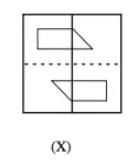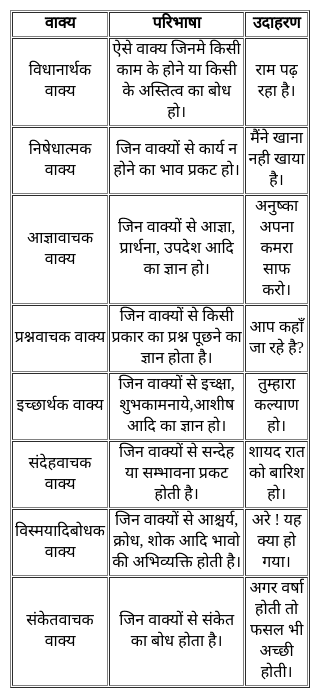HTET TGT Science Mock Test - 7 - HTET MCQ
30 Questions MCQ Test - HTET TGT Science Mock Test - 7
Which of the following strategies or implications is against the spirit of promoting gender equity keeping in mind gender differences?
The stage in which a child is begin to think logically about objects and events is known as:
Four distinct stages of children's intellectual development are identified by:
In which of the following stages do children become active members of the peer group?
Limitation(s) of Kohlberg's theory of moral development include(s):
i). underestimating young children's moral reasoning abilities
ii). no limitations have been successfully identified
iii). basing his theory primarily on interviews of males as subjects
Which of the following statements is true about assessment of learning as per RTE Act 2009 ?
How does academic curricula subtly promote gender discrimination?
Direction: In the following question, the sentences have been given in Active/ Passive Voice. From the given alternatives, choose the one which best expresses the given sentence in Passive/ Active Voice.
You should open the wine about three hours before you use it.
Directions: The given sentence has a blank. Which of the idioms given against the sentence can fit in the blank to make the sentence grammatically and meaningfully correct? If none of the idioms fit, select ‘None of the above’ as the answer.
In the initial months of Covid-19, scientists were sometimes ____________ in their recommendation on preventive steps.
Direction: Choose the option closest in meaning to the OPPOSITE of the word given in capitals.
FERVENT
Anil can complete a work in 50 days and Hari can destroy it in 100 days. If both of them are working together, in how many days will the work be completed?
Direction: If a Paper (Transparent Sheet) is folded in a manner and a design or pattern is drawn. When unfolded this paper appears as given below in the answer figure. Choose the correct answer figure given below.
Find out from the four alternatives as how the pattern would appear when the transparent sheet is folded at the dotted line.
Question Figure

Answer figure

The length of a rectangle increases by 20% while its breadth decreases by 12.5%. What is the percentage increase/decrease in the area of the rectangle?
The average of 100 numbers is 210. The average of these 100 numbers and 20 other new numbers is 200. What is the average of 20 new numbers?
The positions of how many digits in the number 837912 will remain unchanged after the digits within the number are rearranged in descending order (from left to right)?
Connective tissues are the tissues that help to bind or connect other tissues in the body. They have widely spaced cells embedded in a matrix having a variety of proteins, polysaccharides, and mineral salts. Can you identify the connective tissues among the following?
i. Ligament
ii. Epithelium
iii. Tendon
iv. Blood
A convex lens forms a real, inverted and same sized image as the object placed at a distance of 40 cm from it. The power of the lens is _____D.
Reabsorption of useful substances from glomerular filtrate occurs in :-
What is the basic filtration unit in the kidneys called?
When air is blown from mouth into a test-tube containing lime water, the lime water turns milky due to the presence of
























